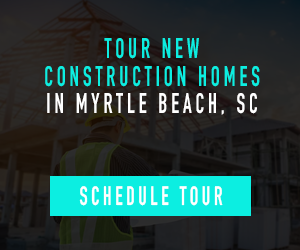
As the weather warms and summer approaches, many of us are eager to get out on the water and go fishing. Whether you’re an experienced boater or new to life on the waves, taking the time to thoroughly inspect your vessel for boat safety and ensure it’s seaworthy is crucial for a safe and enjoyable trip.
Before you cast off, run through this comprehensive boat safety checklist to identify any issues that need attention. From hull integrity to navigation equipment, covering all the bases will give you peace of mind and help prevent mishaps out on the open water.
Hull and Deck Inspection
Start by thoroughly examining the exterior of your boat, looking for any signs of damage or wear. Carefully inspect the fiberglass or aluminum hull for cracks, dents, peeling paint or other structural issues. Minor fiberglass repair can often be done at home, but for more extensive work, you may need to visit one of the https://boatplanet.com/services/fiberglass-repair. These specialized shops have the expertise and equipment to address a wide range of hull repairs, from gelcoat scratches to major structural damage.
Pay close attention to the keel, rudder, and trim tabs, ensuring they’re firmly attached and operating smoothly. Check for any signs of corrosion on the metal fittings and hardware. Inspect the deck, gunwales, and rub rail for cracked or damaged sealants that could allow water intrusion.
Don’t forget to examine the boat’s underside. Look for any cracks, blisters, or other damage to the gelcoat or bottom paint. This is especially important if your boat has been stored on a trailer over the winter, as the constant pressure can take a toll. Any issues with the hull or deck need to be addressed before launching to maintain the structural integrity of your vessel.
Engine and Fuel System
Next, give your boat’s engine a thorough once-over. Check the oil level and top it up if necessary. Examine the fuel lines, filters, and connections for any leaks or wear. Replace the fuel filter if it’s due for service. Ensuring your engine is well-maintained and in good working order is crucial for a safe and reliable trip.
Ensure the engine mounts are secure and there’s no excessive play or vibration. Listen for any unusual noises that could indicate a problem. If your boat has an outboard motor, tilt it up and check the propeller, skeg, and cavitation plate for damage. Replace the prop if it’s bent, nicked, or otherwise compromised.
Don’t overlook the fuel tank and lines when inspecting boat safety. Make sure there are no cracks, leaks, or corrosion, and that the tank is properly vented. Inspect the fuel shut-off valve and ensure it’s functioning correctly. A fuel system in good condition is essential to prevent fire hazards and engine failures.
Electrical and Navigation
Turn your attention to the boat’s electrical system, starting with the battery. Check the charge level and connections, and clean the terminals if necessary. Ensure the battery is securely mounted and the hold-down is tight. A well-maintained battery is the backbone of your boat’s electrical system.
Test all the lights, including navigation lights, interior cabin lights, and electronics. Replace any burnt-out bulbs. Inspect the wiring for signs of chafing or damage, and make sure all connections are tight and corrosion-free. Functional lighting is not only a safety requirement, but also crucial for visibility and navigation.
Verify that your boat’s navigation equipment is in good working order. Power up the GPS, depth sounder, and any other electronics to ensure they’re operational. Check that the compass is properly calibrated and functioning accurately. These critical navigation tools can mean the difference between a safe and successful trip, and one fraught with peril.
Safety Equipment
No boat safety checklist would be complete without a thorough inspection of your safety gear. Start by ensuring your life jackets are in good condition, with no rips, tears, or missing straps. Make sure you have the right number and size of life jackets for all passengers. Life jackets are the single most important piece of safety equipment on any boat, so it’s essential they are well-maintained and readily accessible.
Inspect your fire extinguishers to confirm they’re fully charged and that the seals are intact. Check the expiration date and replace them if necessary. Ensure your flares, air horn, and other signaling devices are also in good working order and within their expiration dates. These items can be lifesavers in an emergency situation.
Don’t forget about your boat’s first aid kit. Restock any depleted supplies and make sure the contents are up-to-date. Include essential items like bandages, antiseptic, pain relievers, and any necessary prescription medications. A well-stocked first aid kit can provide crucial medical attention in the event of an injury or illness on the water.
Other Essential Checks
As you wrap up your boat safety inspection, don’t overlook a few other critical items. Test the bilge pump and make sure the discharge hose is clear and unobstructed. Ensure the boat plug is in good condition and seals properly. A malfunctioning bilge pump or leaky plug can quickly lead to a sinking vessel.
Verify that your boat registration and documentation are current and easily accessible. Review your insurance policy to confirm you have adequate coverage for your planned activities. Being prepared with the necessary paperwork and insurance can save you a lot of headaches if you encounter any issues while on the water.
Finally, take a moment to familiarize yourself with your boat’s emergency procedures. Know where the fire extinguishers are located, how to use the emergency cut-off switch, and what to do in the event of a man overboard situation. Being well-versed in emergency protocols can mean the difference between a minor incident and a true disaster.
By taking the time to thoroughly inspect your boat and its safety equipment, you’ll be well on your way to a successful and worry-free fishing trip. Remember, a little preparation now can go a long way towards ensuring your time on the water is both safe and enjoyable.
Whether you’re an experienced captain or a first-time boater, the importance of a comprehensive boat safety check cannot be overstated. By addressing any issues or concerns before you set sail, you’ll be able to focus on the true joys of being out on the open water – the thrill of the catch, the serenity of the waves, and the camaraderie of your fellow anglers. So, grab your tackle box, double-check your safety gear, and get ready for an unforgettable day of fishing on the high seas.
Local News Via - MyrtleBeachSC.com









